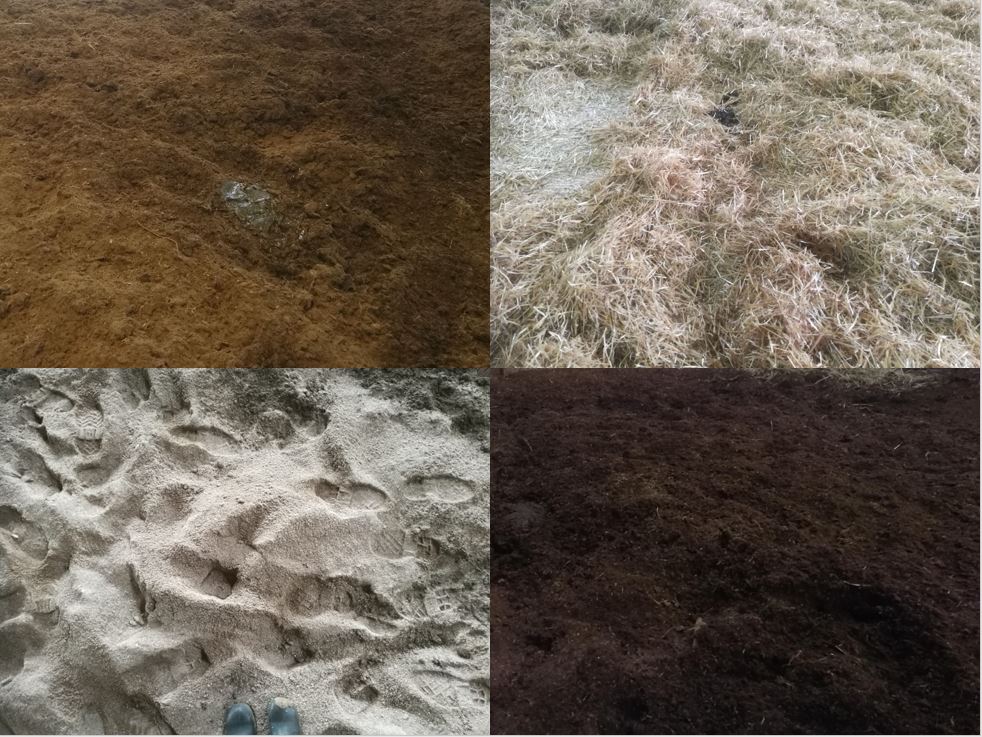During summer and early autumn in 2019 I visited 12 farms collecting information and practical experience on bedded pack areas for transition cows. The bedded packs were not composting bedded packs which are stirred daily. Instead new bedding was added on top until it was completely (or partly) removed once in a while, usually a few times in a year and new bedding was added. The farmers were interviewed and in addition I made some observations in the barn on the cleanliness of the bedding and animals, depth of the bedding and the freshness of the barn air.

Fresh cows on sand bedding
In my blog in July I briefly covered the reasons why the survey was made. There is little research available of the management of the bedded pack areas. We wanted to bring forth the practice-based “silent knowledge” from the farmers and, in the end, we got a good amount of information! We heard of different strategies in the transition cow management and grouping, from a brief visit in the maternity pen to a month long stay in the VIC-group. Farmers mentioned the stress resulting from calving rushes, gave good tips for bedded pack area designing, and of course, practical knowledge of the characteristics of different bedding materials and how they work as a bedded pack.
“The best possible place for a cow”
Different strategies for the transition cow facilities
All survey farms had AMS milking and the number of the robots varied from 1 to 7. At the same time the number of the cows varied from 64 to 340 cows. The farms could be divided to three groups according to their transition cow grouping system:
- VIC group – close up cows and fresh cows in bedded pack area
- Calving pen in bedded pack
- The whole dry period (or half of it) in bedded pack area
When using VIC-group a different approach is needed in managing the animal traffic when compared to the maternity pens. Sometimes cows give birth late or the cow becomes sick and can’t be moved to the milking group as quickly as planned. The calving pen needs to have more loose space or more pens in reserve compared to a bigger bedded pack area for fresh cows. VIC-group gives more flexibility in times of big calving rushes because the area is planned to be big enough for all fresh cows to stay in there longer. So with a VIC-group there is no rush to move the cows to the milking group and give way for the upcoming calvings.
“The heifers learn to go to the robot faster than in any other barn I have worked in”
I had many discussions on how the number of the animals varies in the transition cow facilities and how it affects the routines in the barn. In this survey the portion of dry cows from total number of cows varied a lot (9,9-21,4 %). The number of dry cows indicates if the calving facilities will be cramped or spacious during the next two months. By paying attention to evenly distributing calvings it’s possible to optimize the number of animals in the transition cow facilities. Overfill causes stress for animals and people. Farmer has to solve where to put all the cows, the labor increases as well as the usage of bedding.
Eyes on the bedding
The most common bedding materials were sand, straw and peat. Some farms mixed different bedding materials, some had a layer of woodchips or cutter in the mix. The labor time needed to keep the bedded pack area clean and dry differs between farms. The time needed for adding bedding depends on the efficiency of the farmyard and how much preparations are needed. Nevertheless, the farms didn’t find the bedded pack area management to be too laborious.

The choices between bedding materials and routines must be considered individually by the farm and no universal guidelines can be given based on these interviews. Price, availability, characteristics, storage space, previous experiences and time of the year all affect the farm’s bedding choices.
Tips for designing the bedded pack area
From the farm visits I gathered a good list of details to consider when designing a bedded pack area. The points consist of my own observations and also farmer’s experiences of their bedded pack areas; things they would now do differently or things they have made improvements later. The farmers had a good feeling of their bedded pack areas.
“It wasn’t as laborious as I previously thought”
We got plenty of good examples of bedded pack area management. More research should be made to get general numbers for the amount of bedding needed. A continuous monitoring of the different bedding amounts and the number of cows in the transition cow facilities is needed before we are able to give specific numbers on how much bedding is needed for a cow per day.
“It’s a catastrophe if it’s not well taken care of”

We presented our results first time in last November in 4dBarn Dairy Welfare Meeting. We got funding for our survey from Oulun läänin talousseuran maataloussäätiö and we are very grateful for the support!


